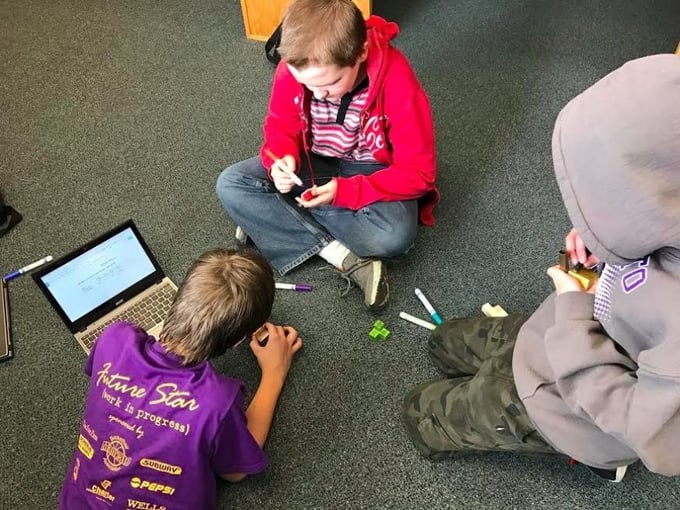Kim Mueller is the career and college readiness coordinator for Mankato Public Schools in Mankato, Minnesota.
Students at Dakota Meadows Middle School in Mankato, Minnesota, have been working diligently to design, build, test, document, and share puzzle cubes in Michael Schuldt’s classroom. This activity, which is a part of the Design and Modeling unit in PLTW Gateway, is empowering students to see how they can transfer what they learn in this class to their other courses.
This focus on utilizing “transferrable skills” has been part of a trend at the middle school level in Mankato Area Public Schools, based on the district’s STEAM philosophy. The philosophy is taking more than the content areas of science, technology, engineering, art, and math, and building on those concepts in the following ways:
S: Student Questioning – Students ask questions of a higher order in every setting.
T: Teacher Questioning – Teachers ask questions to students that they don’t know the answers to, typically involving real-world issues.
E: Engagement – All students are engaged in their learning.
A: Argue from Evidence – Students prove their ideas through evidence-based practice and reasoning.
M: Methods of Inquiry – Teachers use strategies (e.g. engineering notebooks) to encourage inquiry-based approaches to teaching and learning.
By engaging in the puzzle cube activity and focusing on the principles outlined in our STEAM philosophy, students see how the design process is used throughout the world and in a variety of ways.
PLTW’s blog is intended to serve as a forum for ideas and perspectives from across our network. The opinions expressed are those of each guest author.


